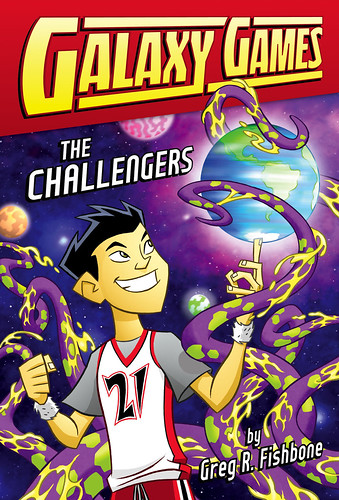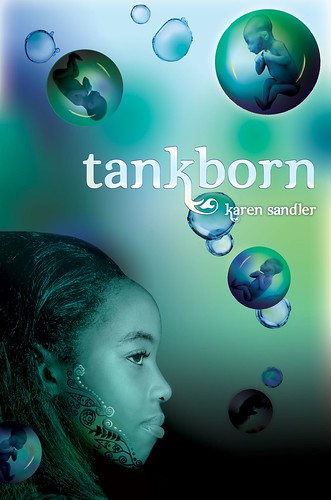Dystopias are hot right now, that’s for sure. And I do love a good dystopia. After all, I’m a child of the 80s. Who doesn’t love The Terminator or Mad Max (especially the cheese of Beyond Thunderdome)? Or to use the example of a more present-day dystopia, space cowboys in Firefly? I love Joss Whedon, but his “shiny” futures (and presents) involve a lot of loved-character deaths, often in non-heroic, dystopian ways, and lately involving a lot of gunshot wounds to the head (I’m looking at you, Dollhouse). I call that dystopia.
But I’d like to see as much hope as I might despair. Oh, sure, dystopias often have a lot of hope, too—in fact, that’s probably one of the reasons I was frustrated with the last book of the Hunger Games trilogy, Mockingjay, because the end didn’t feel as hopeful as I wanted it to be. I feel like Matched by Ally Condie presents the possibility of a lot more hope—though we’re still waiting on book 2 and I could be wrong about that. And when your world is filled with zombie hordes, how much hope is left to the human race, let alone for any particular individual? I’m kind of scared to read The Dark and Hollow Places for this reason, though I’ve heard it’s really good. (And I loved books 1 and 2, so why am I so scared, even if it isn’t all that hopeful an ending?)
Science fiction is on a comeback slope, and most of it is dystopian. Yet kids, particularly, are all about hope for the future—even the teens who think we currently live in a dystopia hopefully have hope for their own futures, and plan to make the world a better place than the war-torn, disaster-filled world we’re living in right now. We need stories that address the hopeful side of life, as well, particularly in science fiction.
Farah Mendlesohn, a children’s book scholar, wrote an excellent Horn Book piece on this idea a couple years ago. While I don’t agree with her completely, she makes some great points (in my opinion, many of the old guard of SF don’t recognize children’s SF not because the writers aren’t SF experts, but because many old-guard SF writers still write as if it’s 1960 techwise—it baffles me that some of the old guard don’t recognize the genius that is Scott Westerfeld’s work as far as forward-looking tech, and I think addressing social concerns is vitally important too; not all science is hard science, says the social science major). (Equally important, though, is her point that many in children’s lit don’t understand the history of SF in children’s—those who don’t know who Norton and Heinlein are need to fix that problem!)
One point, in particular, is particularly important to my purpose here, though:
In their fiction for younger people, Heinlein, Norton, and their contemporaries wrote with an eye on concerns very similar to those found in adult science fiction: the world of work, the world of changing technology, and the bright new opportunities promised by these things. They could do this for two reasons. First, the world of teens was much closer to the world of adults than it is today. Norton and Heinlein’s audience was either already earning their own living or would be a few years in the future. Now the fifteen-year-old reader might be a decade away from the professional workplace. Second, Heinlein and Norton shared the values of the adult SF market and assumed that their role was to introduce younger readers to that material. They loved what teen SF readers loved: the bright shiny promises of the future.
…And perhaps because of YA literature’s preoccupation with social problems, science fiction for teens became increasingly a place for adults to warn the young about the future. At first glance this might be seen as introducing a healthy skepticism, but it was relentless. Very few SF books published for the teen market since 1970 saw the future as something to look forward to, and the downbeat books are not merely skeptical, they are downright doom-mongering and disempowering.
…So we have a bunch of readers who want stuff that tells them about the world, and the future, and what they can do to take part in it, and they are mostly being told that it’s really depressing, the world is going to hell in a handbasket, and now is the best of all possible worlds. Is it any wonder they head for the adult shelves? The potential readers of SF written for teens have little respect for it, because they themselves can compare it to what is on offer for adults and know it does not match up.
…We may want children to learn science and languages, but our societies regard children and adults who enjoy doing that as a bit odd. The conflation of all children into one pool is improper, as a general principle, but when dealing with the children who like science fiction, it ignores the issue that those children—and their adult counterparts, readers and critics alike—have developed their own system of genre-specific criteria.
 These are some good points, and I hope that books like Greg Fishbone’s Galaxy Games series will at least in part address the need for more hopeful, forward-looking science fiction for children. But those who warn of doom and gloom also have a point—socially, at least, and environmentally, we have a lot of things wrong with the world, and as Whitney Houston says, our children are the future, right? They’re our hope. So how about some good books set in the far future that did what Star Trek did, but in a way that doesn’t dismiss the conflicts that had to happen to get them to that state of happy-happy future? What about eco-engineering, and green space exploration? What about diversity in the future that also addresses our historical problems socioeconomic and racial conflict? That is, what’s interesting to me isn’t so much “We’ve solved all of Earth’s problems! No war! No need for money!” to paraphrase Picard bragging about the future to a 23rd-century woman in First Contact. What interests me is what brings us to that … not utopia, because certainly there was still conflict in Star Trek, but a better world, certainly, in many ways.
These are some good points, and I hope that books like Greg Fishbone’s Galaxy Games series will at least in part address the need for more hopeful, forward-looking science fiction for children. But those who warn of doom and gloom also have a point—socially, at least, and environmentally, we have a lot of things wrong with the world, and as Whitney Houston says, our children are the future, right? They’re our hope. So how about some good books set in the far future that did what Star Trek did, but in a way that doesn’t dismiss the conflicts that had to happen to get them to that state of happy-happy future? What about eco-engineering, and green space exploration? What about diversity in the future that also addresses our historical problems socioeconomic and racial conflict? That is, what’s interesting to me isn’t so much “We’ve solved all of Earth’s problems! No war! No need for money!” to paraphrase Picard bragging about the future to a 23rd-century woman in First Contact. What interests me is what brings us to that … not utopia, because certainly there was still conflict in Star Trek, but a better world, certainly, in many ways.
 I’m excited about Galaxy Games because it’ll tackle some of these ideas for a middle-grade set in the context of sports, but I’d also be interested to see what a hopeful science fiction story for teens might look like. Space travel, new worlds, the final frontier, etc. One current book that addresses the world of work is David Macinnis Gill’s Black Hole Sun, though still in a dystopian way. Tu’s list for this fall also has one, Tankborn—at age 15, GENs have to enter the world of work. Still, dystopian. I’m not looking for utopian, necessarily—everyone’s utopia is someone else’s dystopia, often enough—but I am wondering what a modern Heinleinian (Heinleinesque?) tale might look like (perhaps Black Hole Sun IS today’s Have Spacesuit Will Travel?), and hoping for something like that in future submissions.
I’m excited about Galaxy Games because it’ll tackle some of these ideas for a middle-grade set in the context of sports, but I’d also be interested to see what a hopeful science fiction story for teens might look like. Space travel, new worlds, the final frontier, etc. One current book that addresses the world of work is David Macinnis Gill’s Black Hole Sun, though still in a dystopian way. Tu’s list for this fall also has one, Tankborn—at age 15, GENs have to enter the world of work. Still, dystopian. I’m not looking for utopian, necessarily—everyone’s utopia is someone else’s dystopia, often enough—but I am wondering what a modern Heinleinian (Heinleinesque?) tale might look like (perhaps Black Hole Sun IS today’s Have Spacesuit Will Travel?), and hoping for something like that in future submissions.
And feel free to suggest published books for a list of “hopeful” SF for teens.
